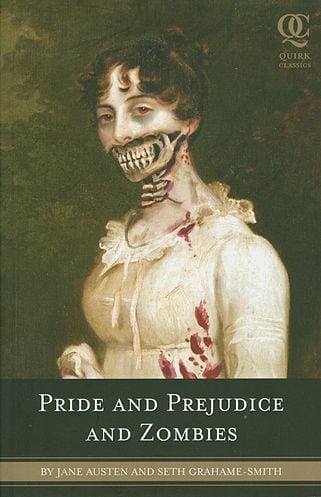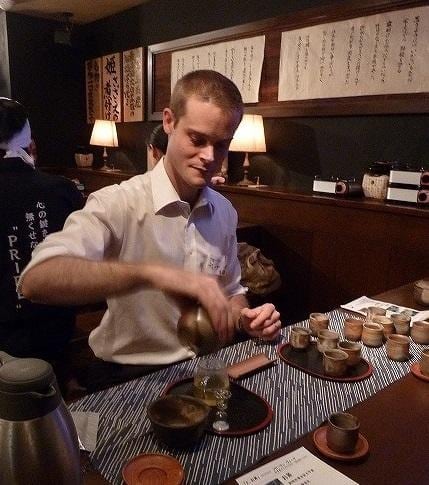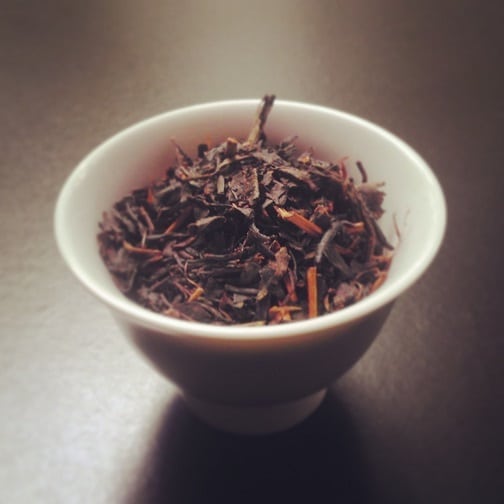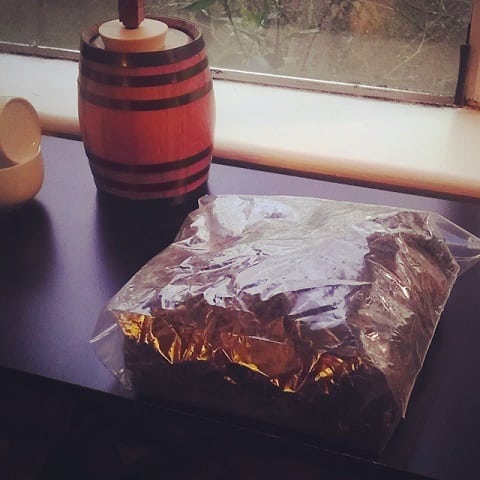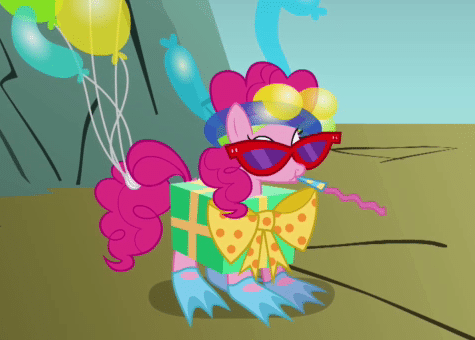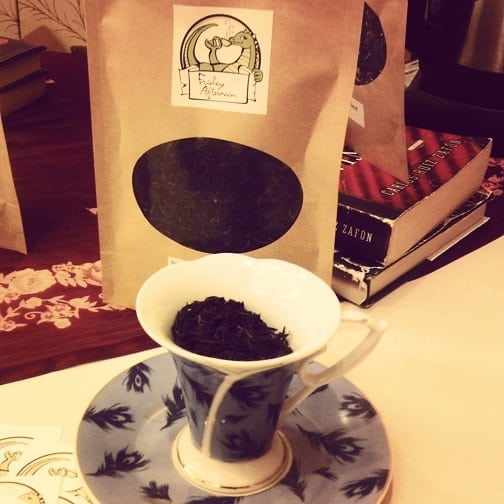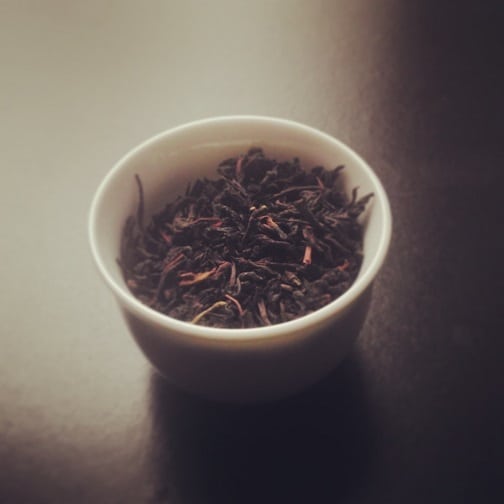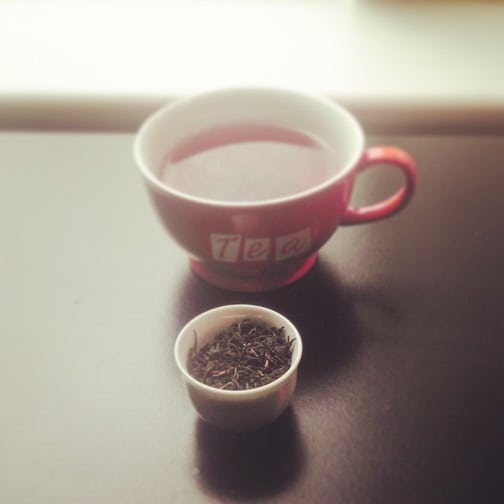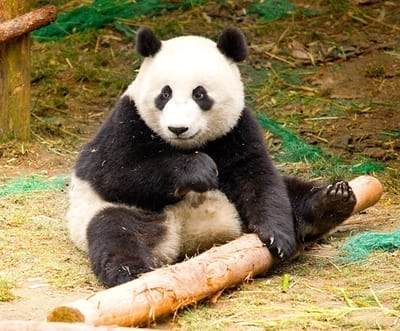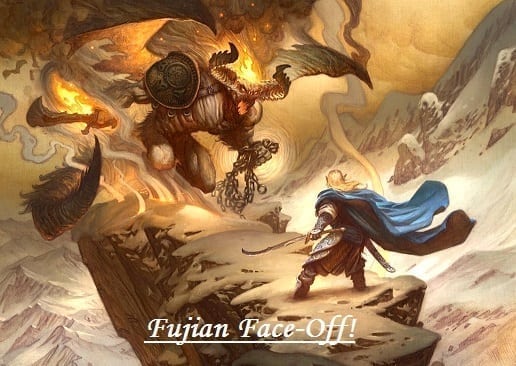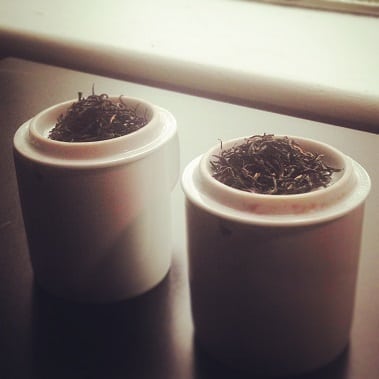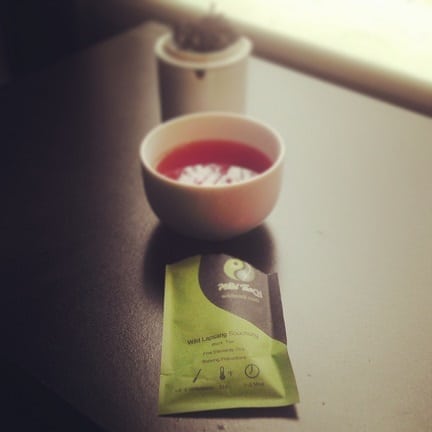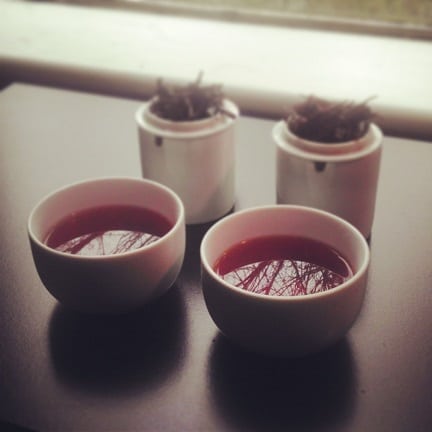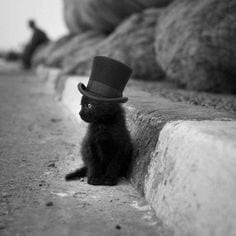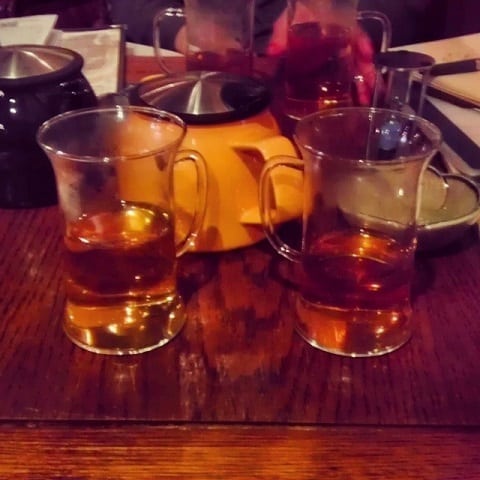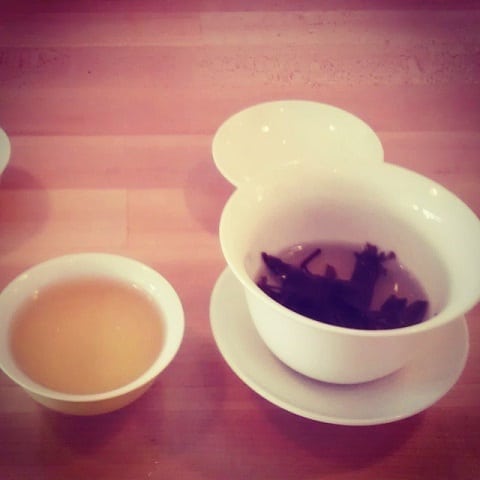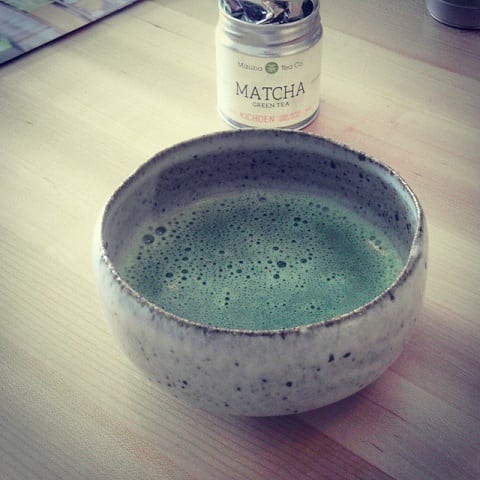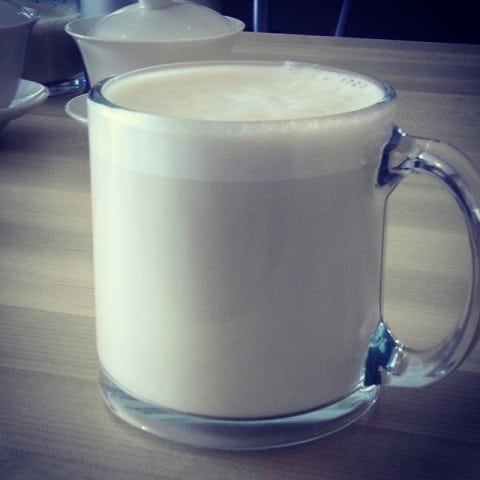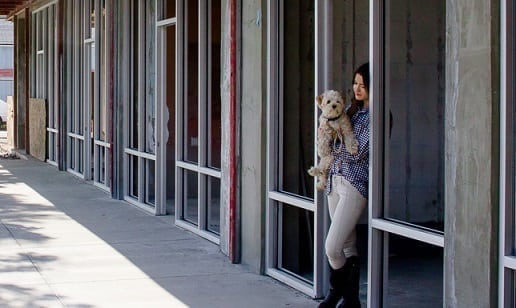This all started with a forum topic. Tea Trade’s resident Smiling Frenchman – Xavier (of the Teaconomics blog) – had posted a discussion starter. It was aptly titled: “The First Scottish Tea is White and Smoky”
That immediately held my attention. In the discussion, Xavier posted a link to an article about a new outfit dubbed The Wee Tea Company, who had set up their own tea garden. In Scotland! Not only that, but they had also brokered an exclusive deal with the British high-end store – Fortnum & Mason. The asking price? £35 for 15g. That’s, like, $53 in ‘Merican money.
To their credit, though, the two teas they were producing were quite special. One was a regular white tea, while the other was a smoked white tea. Yes, smoked! Like a Lapsang Souchong, but instead of using pinewood, they used beech trees.
The garden itself was called the Dalreoch Tea Estate (aka. The Wee Tea Plantation).
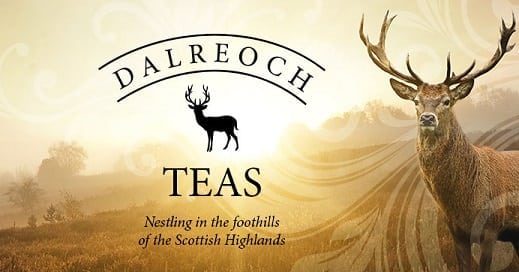
Banner mooched from The Wee Tea Plantation Facebook page
“Dalreoch” loosely translated to “the field of the King” in Scots-Gaelic. Said garden was nestled in the Strathbraan valley at the foot of the Scottish Highlands, just outside of the small town of Amulree in Perth & Kinross County. The garden was originally a test plot purchased by one Tam O’Braan geared toward the development of degradable polymers for agricultural use. Later, however, he teamed up with Derek Walker and Jamie Russell of The Wee Tea Company (based in Fife) to start a tea garden.
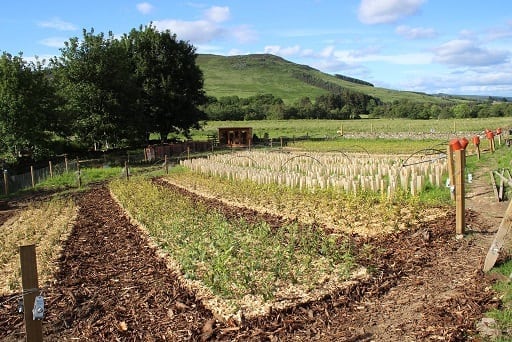
Image mooched from The Wee Tea Plantation Facebook page.
They broke ground in 2012 with roughly 2,000 tea plants to start. While Scottish weather was temperamental at best, the lads developed clever ways to help the plants thrive. The aforementioned polymers helped the soil retain moisture, and kept pests from feeding on the young plants. As the tea bushes matured, they were then covered in UV-protective plastic tubes to restrict photosynthesis. During the harsher winter months, the plants were fully covered to prevent die-off. In 2014 – just a little over two years – they plucked their first leaves, for the first ever Scottish white tea.
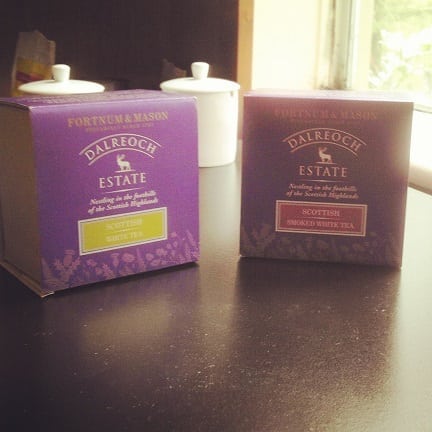
The question wasn’t whether or not I wanted it, but how I could bloody well get a hold of it. Neither The Wee Tea Company or Fortnum & Mason delivered to the U.S. I wasn’t worried about the money, per se. I would’ve sold a kidney to scrounge up the cash, if I had to.
I did the only thing I could do. I played the ol’ “tea blogger” card and hoped for the best. That . . . went about as well as expected.

After all, I was small-time compared to all the other outlets that were covering the garden – STiR Tea & Coffee, The Daily Mail. Hell, even The BBC.
My only answer was to utilize some of my (albeit few) UK contacts and see if they could make the purchase on my behalf. In the interim, I counted pennies. Unfortunately, that was taking far longer to do than I thought. My kidney was dreading my eventual decision.
A savior appeared in the most unlikely of places. For about eight years, now, I had a penpal. We’ll call her “Mistress G”. She was a tea drinker, but not one of my regular tea contacts. I’d never met her in person. Mistress G just happened to be residing in the U.K. In a passing conversation, I told her about my interest in the Dalreoch smoked white tea.
She said, “Oh, I can get that for you.”
I replied with, “There’s no way I can pay you back for that.”
She countered with, “Don’t worry about it, consider it a gift.”
I had my very own mysterious, tea-swigging, philanthropic Carmen Sandiego.
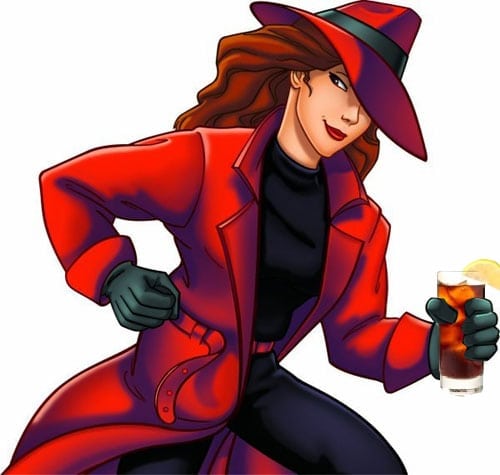
The package arrived in record time, a week later. In it, she also included a tin of chocolate pearl cookies, handmade Earl Grey shortbread from Edinburgh, and a tea napkin! All from Fortnum & Mason. My eyes glazed over.

After making short work of the Earl Grey shortbread, I bee-lined to the tea tins.

Scottish White on the left; Smoked Scottish White on the right.
The regular Scottish white tea had beautiful young, whole leaves and stems with a bouquet of colors ranging from green to brown. The aroma they gave off was straight forest and mint, with a dash of earth. It reminded me of a Yunnan-grown Moonlight white. Yue Guang Bai was a very burly, salt-of-the-earth sorta white on first impression; so was this.
The smoked white was a different beast entirely. On appearance, the leaves and stems had a smaller cut, almost broken pekoe-ish appearance. It was more in line with a Bai Mu Dan, visually. As for the aroma . . . oh my, “Yum.” Smoked teas tend to have an alternating hickory, campfiery and peaty scent to them. This had that but with a slight fruity tang on the back-end. Like someone lit a caramel-dipped apple on fire.
Given the smaller leaf pieces and the scent, I could almost imagine how the conversation between the innovators went.
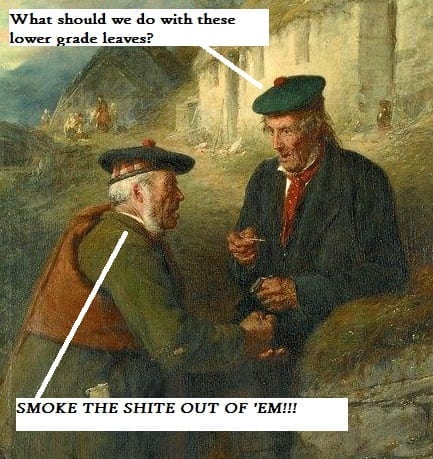
And then they punched each other in the face for solidarity.
For brewing, I went with a typical white tea approach – roughly 175F water and a three-minute steep for each. 1 heaping teaspoon of leaves in a 6oz. steeper cup.
Scottish White Tea
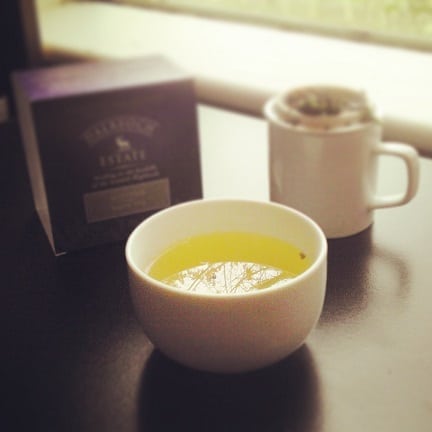
The regular white tea brewed to a vibrant yellow liquor with an aroma of berries, apples and spring leaves. This impression also echoed in the taste, which possessed a medium-bodied, creamy and fruit-sweet mouthfeel. It ended on a smooth, almost velvety finish with a lingering aftertaste of wilderness.
Scottish Smoked White Tea
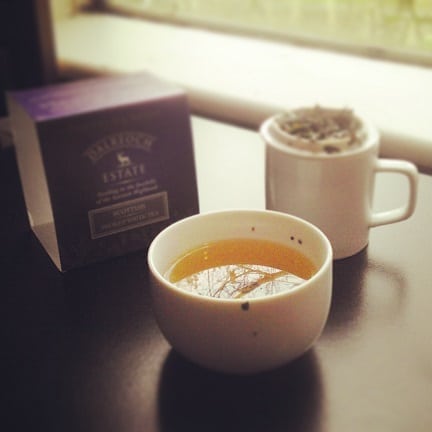
The smoked white brewed considerably darker, approaching Darjeeling amber in color. As for scent, well, it should be obvious. Straight peat moss and burnt wood wafted from the cup, but it was far more muted than I thought it would be. Not a negative thing at all, but a thankful subtlety that I wasn’t expecting. On taste, I was first greeted by whiskey, which then opened the door for chopped firewood, and courteously escorted an herbaceous finish.
I honestly can’t pick a favorite. White teas were the first loose leaf type I appreciated when my exploration was still in its infancy. Smoked teas appealed to my visceral, inner almost-manchild. On the one hand, I always appreciated the delicate and fruity aspects of tea. On the other, I liked to be hit in the face with blunt, burning trauma to my palate. I can’t decide, but what I can say is that this fledgling garden is off to a fantastic start.
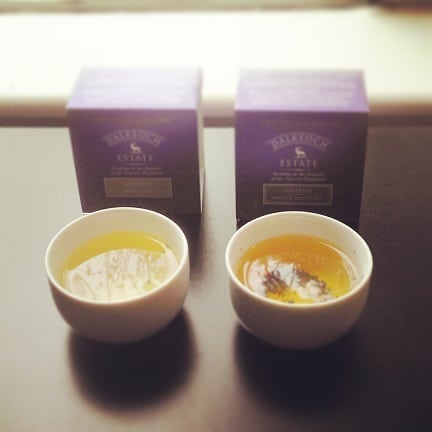
Would I pay $50-plus for their offerings? No. Of course, I’m probably saying that because I’m poor. For the moment, the price is slightly justified – both for the novelty and the rarity. Given that they’re only working with 2,000 plants – young ones, at that – they can easily ask for a higher price point for their yield. My hope is that when the operation expands, and more plants are introduced, that the price evens out a bit. With gardens in Northern Ireland, France, Switzerland and Italy going in, competition is bound to be fierce.
But they’re used to competition, aren’t they?

Photo by Gene Rodman. “Model”: Gary Robson.
I’m just grateful this landed in my lap the way it did. And I can’t thank my mysterious benefactor enough. My diluted Scottish ancestry salutes ye, Mistress G.
UPDATE: I was just informed by one of the growers that they are now delivering globally. The last remaining stock can be purchased HERE.
